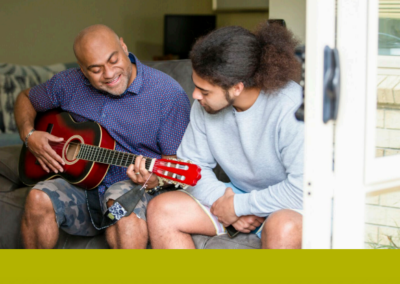Case Study_Monte Cecilia_FINAL

(Photo Naomi Haussman)
It’s a miserable Christchurch day, with just a few lunch-break workers sheltering with cigarettes under the awning. Tequilla is at the hangi house in Aranui, sandwiched off the road behind Big Gary’s Fish n Chips and a self-service laundromat.
Here you can have fried bread with your tea, raw fish in thick coconut cream, boilup or a hangi for ten bucks. The windows are opaque with steam. Napkins folded into diamonds, stacks of white bread with butter and Best Foods mayo.
“Act now!” someone has written in red marker on the fridge. “One step in the right direction is better than 10 years thinking about it.” Then, below it: “Be grateful for what you have and what you don’t have.”
Tequilla splits open the string-bound foil package and it releases a sweet, aromatic mushroom-cloud of steam: chicken, pork, fragrant pumpkin and cabbage melting into stuffing. She and her children have been homeless for almost a year.
They moved up from Invercargill last year, when her former partner faced a court case on sexual assault charges. Tequilla uplifted her young family and got out.
“Invercargill’s so small. I didn’t want to be in the same town as him,” she says.
Originally from Christchurch, she decided to move back home to be closer to her family, bringing her five children aged between four and 10 with her.
For the first few months they stayed with family, bunking in with her sister and partner in their home. She’d sleep on a mattress on the floor with her youngest, the rest of the kids crammed in the double bed. But with eight people in a three-bedroom house, tensions started running high. Her sister was working a night shift, and it’s hard keeping five kids quiet in the morning rush. She moved in with her parents, but again, the shift from two to eight people in a single house put too much pressure on the relationship. They started fighting.
“It just wasn’t good with the kids,” she says.
With options ticking down, she hit the social services. “The first place I rang was the YWCA. They couldn’t house us, because all their family rooms were all full. Then I went to WINZ, and they put me on a waiting list. Told me to try the City Mission.” And that’s where she is now—staying in the mission’s emergency housing, sitting on a Housing New Zealand waiting list. Her time at the mission will be up in four weeks—it’s strictly temporary—and beyond that lies a big question mark: maybe another lounge floor, a friend’s spare room, a van?
“I don’t know. I don’t know what the next step is yet,” she says.
This is what researchers call category two homelessness: families who drift from house to house, couch surfing, living in tents and caravans, garages and short-term, emergency respite homes. They’re not on the streets—yet.
While the traditional picture of homelessness is the grizzled street sleeper, in reality many of New Zealand’s homeless community are women like Tequilla—single parents scrambling to keep up routines, pack school lunches, maintain a facade of normalcy as the options, one by one, begin to tick down.
Over the past three censuses in New Zealand, half of those experiencing extreme housing deprivation were women. Last census, the largest “family status” category of homelessness in New Zealand was single parents with dependent children who made up 43 percent of those without homes. Parents with children overall made up 53 percent. In total, 21,797 children and their parents were in “severe housing deprivation” on census day in 2013, up from 15,085 in 2006. Singles, comparatively, make up less than a quarter of the total homeless or housing-deprived population.
CHA Newsletter - 17 December 2025
CHA Newsletter - 2 December 2025
Community Housing Aotearoa Newsletter - 3 November 2025